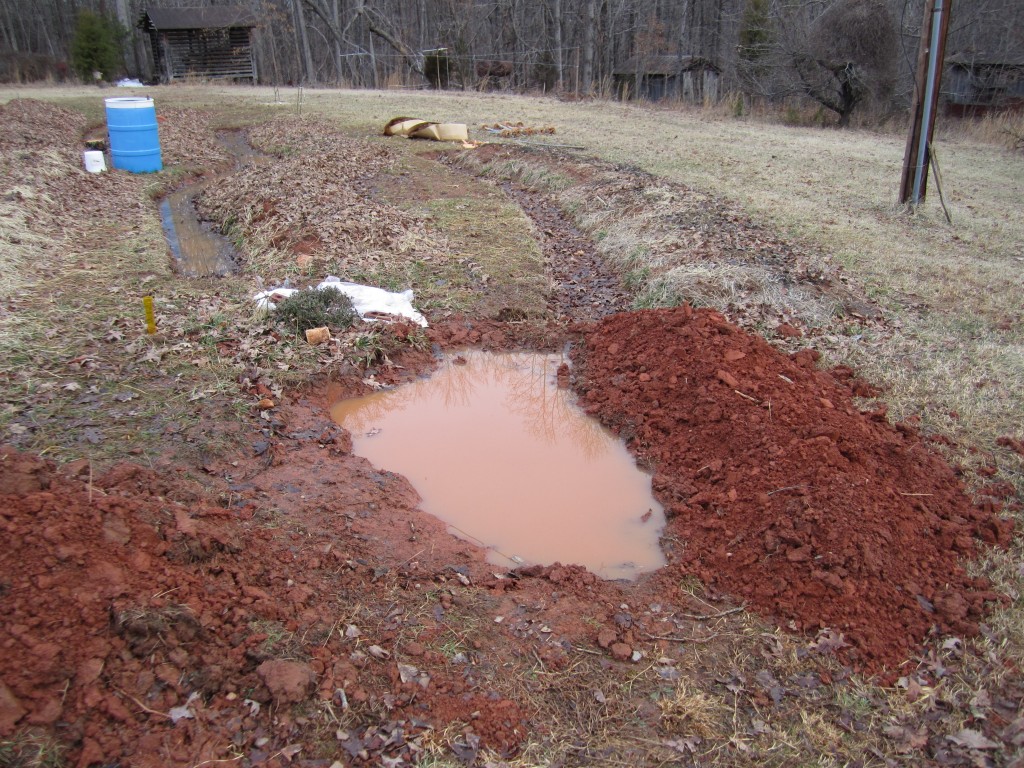We got some rain on Saturday, just a little but it was enough to completely fill the pond I started to dig. It’s 3 feet at the deepest spot, probably holding close to 300 gallons of water, and has a large catchment area that includes at least two of our garden swales.
It’s muddy, and I’m not sure if I want to line it or not. The positives of lining it are better clarity and less leaking through the sides and bottom. The positives to an unlined pond are less materials, easier installation, and increased water filtration in the surrounding soil. We’ll see.
The small pond will create a unique habitat and micro-climate near our garden which will attract all sorts of beneficial wildlife like frogs, lizards, dragonflies, and birds. These helpful characters will help control insect populations, giving our crops a better chance to make it to harvest. The water in the pond will also act as a temperature regulator, helping to moderate both hot and cold conditions. The water in the pond will also be available to use for irrigation, and during heavy rain events will backflood into our most downhill garden swale.
This small, hand dug pond will make our garden more efficient and increase the amount of edge. By slowing down and storing more energy/water, we increase the productivity of our system in an ecological way and are able to obtain yields that were unavailable to us before. All these, and many others, are reasons to consider adding a small pond to your garden if you don’t already have one. If you do have one, how is working? What sorts of interactions and consequences have you observed?
